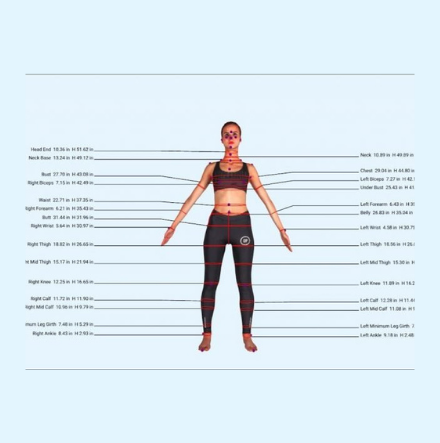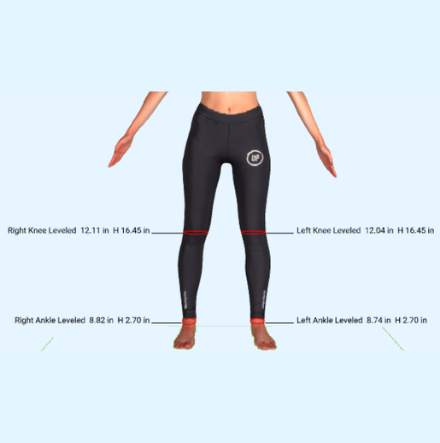Post processing – Recognizing that the ML and Computer Vision algorithms can fail – YES, we can be wrong.
Post processing - Recognizing that the ML and Computer Vision algorithms can fail - YES, we can be wrong. Identifying body landmarks is not a perfect science. It’s a mix of anthropology, metrology, linguistics, geometry etc. With 200+ staff years of experience with developing this solution and talking to a number of people all over the globe, we have realized that we may still miss a certain landmark or measurement. The definition of certain measurements vary and are still debated. The input avatars may not be perfect. These are external factors that affect the measurement accuracy. There can never be an Artificial Intelligent system that we will be able to build that will be faultless. So one of the most important characteristics of an autonomous system is to be able to recognize its own mistakes. Talk about BEING HUMAN. - Gentry Lee on Limit of AI. https://www.youtube.com/watch?v=BkFBz4I5AL8 There are internal or platform reasons too. It is a complex system. Since we use Machine Learning in tandem with Computational and Geometric algorithms, the challenge for us is to identify and isolate the cases where we might have missed our landmarks or when we may not have gotten accurate results. It could be because the scan pose is different from the ones we designed for or the body shape is different or the platform we host on had an issue with the floating points. We may not be 100% right all the time, but we still have to make our system more reliable. The way that can be achieved is by knowing when we might have failed. We can validate the output of the system and filter out the anomalies to make it more dependable. 3D Measure Up platform has an alternate system to verify each measurement value for each request. The verification system discards measurements that are surely wrong. One of the validations is based on relative measurements, obvious comparisons like a. Foot length should be greater than Foot width b. Calf girth should be greater than minimum leg girth c. Hip girth measurement should be greater than thigh girth Similar validation can be done by checking the position of a measurement. For example a. Level of the calf girth is between the knee and ankle b. Foot waist is between Foot Instep and Foot Ball c. Waist is always between the Chest and Hip. The other validations include checking the shape of the girth We check the starting point of the girth is the same as the end point. For example a. Whether the girth closes properly Incomplete girths could be caused due mesh defects such as self intersecting meshes. But then 3D Measure Up can do this in a generic way that is common to all use cases. Another layer of validation by the developer or the end user can certainly be added to improve the reliability. 3D Measure Up API and WebAPP provides an option to export the result as a 3D HTML file that renders the avatar and the measurements in 3D in any standard browser. This 3D rendering is a great tool for visually verification of the output by the end user or the expert viz. Fashion designer, doctor or anthropometrist. Click here to signup for a free trial of A body measurement software, or contact us at 3dmeasureup@prototechsolutions.com Know more about the Measurement of human body parts and 3d body measurement software Verification of measurement system Avatar 3d view Measurements for niche applications Body Measurement Technology Contact us: 3dmeasureup@prototechsolutions.com 3D Measure Up












